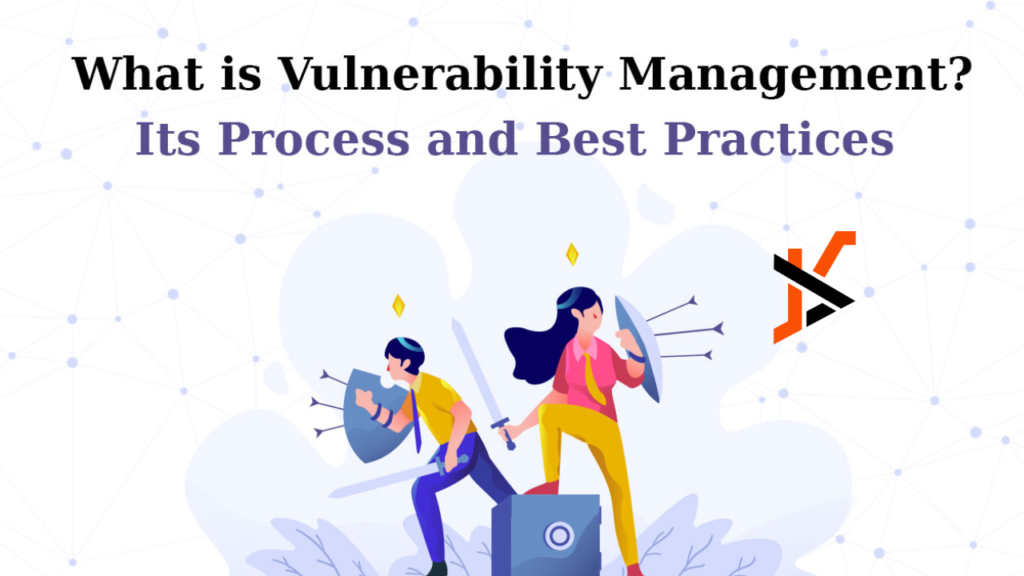An essential component of every organization’s cybersecurity strategy is vulnerability management. It entails locating, assessing, fixing, and disclosing security flaws in operating systems and their accompanying software. Keeping up with vulnerability management necessitates having a solid system to safeguard private information and preserve the integrity of your business. Handling vulnerabilities effectively is more critical than ever because cyberattacks happen more frequently. In comparison to prior years, IBM research indicates that the average cost of a data breach in 2021 was $4.24 million. This emphasizes how important it is to tackle cybersecurity from all angles. Businesses can protect their operations and reputation by drastically lowering the risks related to vulnerabilities by implementing a strategic plan.
Critical Components of Vulnerability Management
- Asset Inventory: Knowing what assets you have is the first step in managing them effectively. An accurate and up-to-date inventory ensures that all potential vulnerability points are monitored.
- Vulnerability Scanning: Regular scans help identify potential weaknesses before they can be exploited. These scans should be thorough and frequent, covering all systems and software.
- Risk Assessment: Assessing the potential impact of identified vulnerabilities helps prioritize remediation efforts. This process involves evaluating both the likelihood of exploitation and the possible damage.
- Remediation: Implementing fixes or mitigation strategies to address discovered vulnerabilities. Remediation should be done promptly to minimize the risk of exploitation.
- Reporting and Metrics: Regular reporting keeps stakeholders informed and helps track the progress of vulnerability management efforts. Metrics and reports can guide future vulnerability management strategies.
Best Practices for Identifying Vulnerabilities
Effective vulnerability identification should combine automated tools with human expertise. Using best practices for vulnerability assessments, companies can stay ahead of emerging threats. These practices include regular scans, frequent software updates, and rigorous testing protocols. One standard method is to employ automated vulnerability scanners that can swiftly assess large volumes of assets. These tools use predefined criteria to identify vulnerabilities and produce comprehensive reports covering all detected issues. However, manual assessments should be noticed, as they can identify complex vulnerabilities that automated scans might miss. Security experts can provide insight that improves the detection rate and accuracy, offering a more nuanced understanding of potential threats.
Steps to Remediate Vulnerabilities
- Identifying Vulnerabilities: Use both automated tools and manual assessment methods. Combining these approaches ensures a comprehensive review of your systems.
- Prioritizing Vulnerabilities: Prioritize based on the severity and potential impact. High-risk vulnerabilities should be addressed first to mitigate the most significant threats promptly.
- Remediating Vulnerabilities: Apply patches, updates, or workarounds as necessary. Remediation efforts should be tracked to ensure completion and effectiveness.
- Validating Remediation: Verify that the remediation efforts have effectively addressed the vulnerabilities. This step is critical for confirming that the fixes are working as intended.
- Documenting Lessons Learned: Keeping detailed records can help improve future vulnerability management efforts. Documentation also provides a historical record useful for audits and reviews.
Tools and Technologies in Vulnerability Management
Numerous tools are available to enhance vulnerability management, ranging from vulnerability scanning tools to comprehensive risk management solutions. Platforms offer integrated suites that cover everything from initial detection to final remediation. Vulnerability management tools track and prioritize vulnerabilities based on severity and potential impact. They also automate and streamline remediation, making managing large volumes of vulnerabilities easier. Integrating artificial intelligence and machine learning into these tools has further enhanced their capability to predict and respond to emerging threats.
Common Mistakes and How to Avoid Them
Despite the best efforts, mistakes can happen. Common pitfalls include:
- Refrain from updating your asset inventory.
- We need to prioritize vulnerabilities correctly.
- Not employing sufficient validation procedures after remediation.
Ensuring a thorough and consistently updated process can help avoid these errors.
Another common mistake is not having a mix of automated and manual assessment processes. Solely relying on one method can leave gaps in the assessment and increase risk. Effective vulnerability management demands a holistic approach that combines multiple methodologies. Regular training and staying updated with the latest cybersecurity trends also play a pivotal role in avoiding these common pitfalls.
Conclusion
Any business that wants to preserve its security and integrity must practice vulnerability management. By adhering to recommended procedures, utilizing appropriate resources, and avoiding typical errors, businesses can safeguard themselves against a constantly changing array of cyber hazards. The secret is to continue being watchful and aggressive in seeing and fixing problems as they appear. By devoting time and money to a thorough vulnerability management plan, you can protect your company’s operations and boost stakeholder and consumer confidence.

